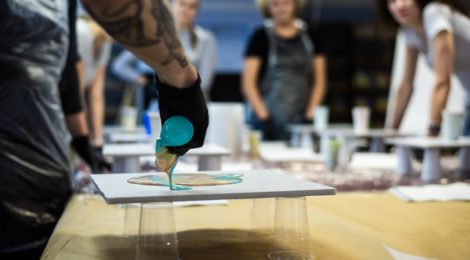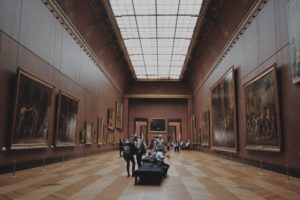
When Museums can be a Space for Healing
Art has long been used as a form of expression, often giving a peek into the artist’s deepest thoughts and feelings. The benefits from this form of expression have led to the development of art therapy in the 1940s. Since then, the practice has gained popularity and has been integrated into clinical treatments globally. Often conducted in group settings, art therapy allows individuals to express and share their thoughts and feelings through a creative outlet. This practice has been offered in various places such as hospitals, clinics, care centres, schools, and most recently museums.
The Trauma and Mental Health Report interviewed Elisabeth Ioannides, an art therapist and education curator at the National Museum of Contemporary Art Athens (EMST). She is a member of several art therapy associations such as the European Federation of Art Therapy (EFAT), and has done research on the impact of museum environments on art therapy. She was also part of the pilot program, “Exploring the Museum’s Image – Exploring My Image”, introducing art therapy into EMST in 2017.

The EMST museum in Athens is one of the growing number of museums putting art therapy programs into their spaces. Some other programs include the “Artful: Art therapy and Dementia” program in Australia and the “Art Therapy and Health” program in Canada. With the popularity of these programs growing, BAAT founded the “Art Therapy in Museums and Galleries” (ATMAG). ATMAG is a professional network for art therapists interested in delivering art therapy in museums and galleries. Ioannides explains that while there are many programs globally, most focus around a specific population, like dementia, cancer, and mental health disorders. The program at EMST is open to the public.
The program offered at EMST is delivered by an art therapist and museum educator who work together to offer new approaches to art therapy. Using their collections, like the “Modern Love: Love in the Years of Cold Intimacy” exhibit, the therapist guides clients through a reflection and discussion about feelings brought on by the museum’s collection. They are then guided into expressing these emotions into their own artwork. Inspired by the museum’s collection, clients are able to discover feelings within themselves they may not have been aware of.
Ioannides shares the importance of having an open and comfortable environment when exploring one’s emotions, and that museums offer a naturally therapeutic environment. In contrast, clinical settings may feel artificial, which does not give rise to an open and relaxed state. Being able to observe the client interact with the art and environment around them can be helpful.

The National Museum of Contemporary Art Athens has a unique research workshop they are running for the second year. Their art-based research art psychotherapy workshop, implemented and created by Maria Konti, aims to build upon previous research in hopes to better the art therapy practice. With further research and the expansion of current art therapy programs there will be more opportunities to implement the practice in various settings. This can open doors to explore more ways to heal in a creative way.
-Autumn Bakhsh-Livingston, Contributing Writer
Image Credits:
Feature: Valerie Titova at Unsplash, Creative Commons
First: Amy-Leigh Barnard at Unsplash, Creative Commons
Second: Maria Hewines at Unsplash, Creative Commons



